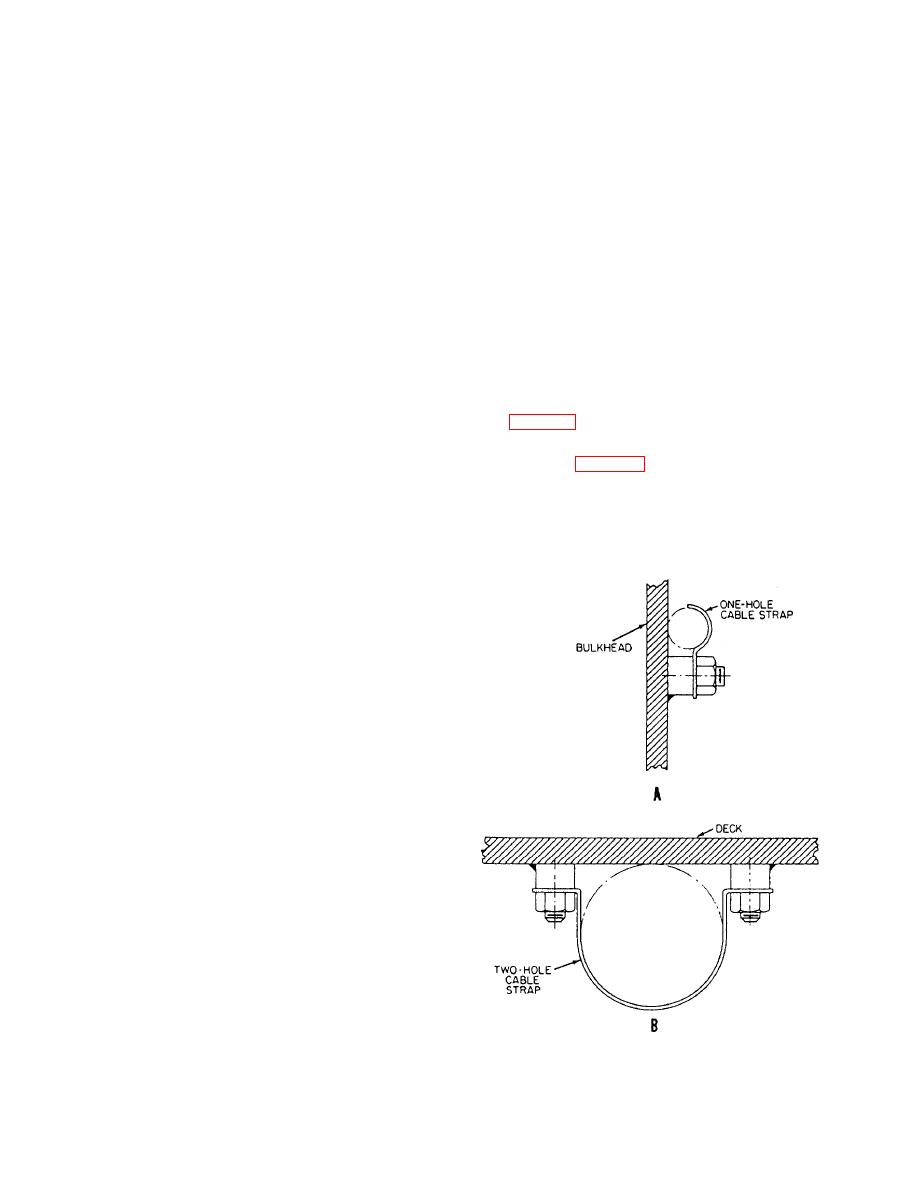 |
|||
|
|
|||
| ||||||||||
|
|
 runs along masts or in compartments that are subject
Selecting Cable
to sweating. In more recent installations, semicontour
When selecting cable, use all reference data avail-
straps and cable bands are used for certain
able. Electrical cables installed aboard Navy vessels
applications.
must meet certain requirements determined by the
The exact methods of installing cables can be
Naval Sea Systems Command. These requirements,
published in the General Specifications for Ships of
found in the Electronics Installation and Maintenance
the U.S. Navy, NAVSEA S9AA0-AA-SPN-010/
Book, NAVSEA SE000-00-EIM- 110.
GEN.SPEC, are too numerous to cover in detail in this
training manual; hence, only the more basic ones are
Cable Supports
included.
Types of cable supports are the single cable strap,
Installing Cable
cable rack, and modular cable supports.
SINGLE CABLE STRAP.-- The single cable
Before installing new cable, survey the area to see
strap is the simplest form of cable support. The cable
if there are spare cables in existing wireways and
strap is used to secure cables to bulkheads, decks,
spare stuffing tubes that can be used in the new
cable hangers, fixtures, and so on. The one-hole cable
installation. The cable run must be located so damage
strap (fig. 2-44, view A) may be used for cables not
from battle will be minimized, physical and electrical
interference with other equipment and cables will be
exceeding five-eighths of an inch in diameter. The
avoided, and maximum dissipation of internally
two-hole strap (fig. 2-44, view B) may be used for
generated heat will occur. Do not run cables on the
cables over five-eighths of an inch in diameter. The
exterior of the deckhouse or similar structures above
spacing of simple cable supports must not exceed 32
the main deck, except where necessary, because of the
inches center to center.
location of the equipment served or because of
structural interferences or avoidance of hazardous
conditions or locations. Where practicable, route vital
cables along the inboard side of beams or other
structural members to afford maximum protection
against damage by flying splinters or machine-gun
strafing.
Where practicable, avoid installing cable in
locations subject to excessive heat. Never install cable
adjacent to machinery, piping, or other hot surfaces
having an exposed surface temperature greater than
150F. In general, cables should not be installed
where they may be subjected to excessive moisture.
Because attenuation (power loss) in a line
increases with its length, cables should be kept as
short as practicable.
Flexible cables are flexible only in the sense that
they will assume a relatively long bend radius. They
are not intended to be stretched, compressed, or
twisted. Bends are made as large as practicable.
The numbers of connectors are generally kept to
a minimum to reduce line losses and maintenance
problems.
Fabricated straps are used for holding the cables.
They are snug, but not too tight. Back straps (which
keep the cable away from a surface) are used for cable
2-41
|
|
Privacy Statement - Press Release - Copyright Information. - Contact Us |